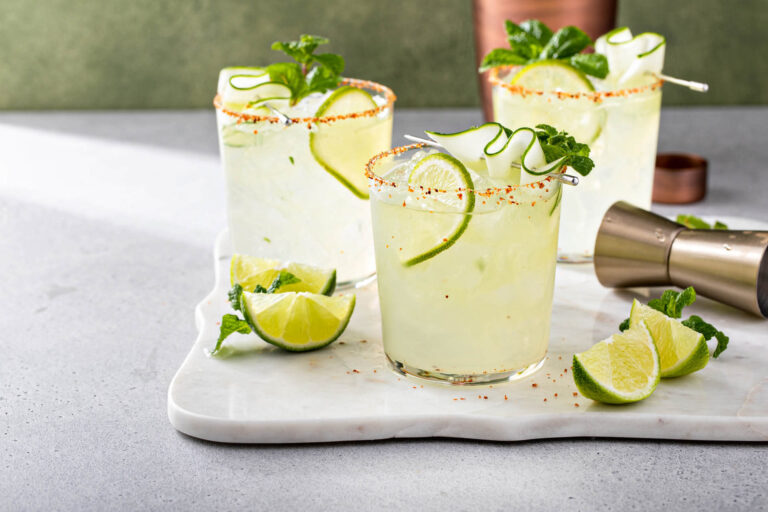16/10/2025
Thailand deep dive: beer resilient as wine and cocktails surge
Boosted by tourism and a vibrant on-trade, Thailand offers multiple opportunities for beverage alcohol brand owners, even as competition intensifies and the market becomes more complex to navigate. Local beer remains dominant, but consumers are increasingly embracing wine and cocktails as whisky falls out of favour
Thailand’s beverage alcohol landscape is undergoing a period of change as imports of beer and whisky contract, with consumers showing a growing thirst for wine and cocktails based on Tequila, rum, vodka and gin.
According to IWSR data, total beverage alcohol (TBA) volumes in the country rose by +2% in 2024, but were flat over the 2019-24 period – but this apparently lacklustre performance conceals the opportunities in a country characterised by a robust tourist industry and a vibrant on-trade.
Beer and whisky are traditionally the dominant categories in Thailand. In the premium-and-above price bands beer accounted for over 80% of on-trade volumes in 2024, and blended Scotch was the most lucrative segment, contributing a third of the value generated by spirits sales in the country’s bars, according to IWSR’s on-trade value data.
But this picture is changing, with wine and white spirits (the latter boosted by a dynamic cocktail culture) becoming increasingly significant in recent years. At the same time, beer imports have fallen back as they struggle to compete with well-known local brands, and blended whisky is showing signs of falling out of fashion.
“Thailand’s beer category is remaining resilient as it is popular with locals and tourists alike, and home-grown brands are increasingly elevating their branding efforts,” reports Jalene Teng, IWSR Senior Market Analyst. “Wine is a growing category, with the market maturing and consumers gravitating towards it – and white spirits such as Tequila, rum, vodka and gin are fast becoming crowd favourites thanks to their huge popularity in cocktail bars.”
Wine: tax breaks and health attributes
Tax reductions introduced by the Thai government during 2024 have helped to boost wine sales further, while also opening the market to a broader selection of products and origins.
Imported still wine volumes rose by +3% in 2024, according to IWSR data, and are predicted to continue to expand to 2029, at a CAGR of +3%. Sparkling wine imports also grew by +3% last year, although future growth is forecast to moderate, with a 2024-29 CAGR of +1%.
Chile and Australia are the top wine exporters to Thailand – partly thanks to past free trade agreements (FTAs) – but the tax cut has particularly benefitted US and Italian wines, with the latter gaining in popularity thanks to their fresh, fruity character. Consumption of Italian wine grew by +9% during 2024, ahead of New Zealand (+7%), Australia (+3%) and Chile (+1%).
“Thai consumers are increasingly favouring wine over spirits – especially over brown spirits – for its perceived health benefits and lower intoxication levels,” says Teng. “Wine is seen as ‘age-defying’ and healthier, especially among women and urban professionals.
“Wine consumption is now closely linked to social occasions and shared experiences, often enjoyed in restaurants and wine bars, and at events. The rise of bottle shops and wine festivals in major cities has further fuelled growth.”
Whisky: outdated image hits imports
Imported whiskies encounter considerable competition from local products in Thailand, while their growth prospects are limited by strict advertising rules and high import tariffs: imported whisky volumes declined by -10% in 2024, and are predicted to be flat over the 2024-29 period, according to IWSR forecast data.
Overall whisky sales also took a slight hit during 2024, amid signs that blended whisky is falling out of fashion, with an outdated image among Thai consumers. However, single malt is gaining traction, while Japanese whisky volumes are fuelled by the growing popularity of the country’s cuisine, underpinned by the highball serve.
“The whisky category faces stiff competition from agave-based spirits and of rum, vodka and gin, all of which are steadily gaining in popularity,” explains Teng. “However, Thailand’s vibrant cocktail scene encourages locals and tourists alike to experiment with whisky-based drinks, which could drive future sales growth.”
White spirits: dynamic growth for agave
Thailand’s vibrant on-trade scene – particularly in major tourist hotspots such as Bangkok, Phuket, Samui and Chiang Mai – offers a diverse selection of bars and unique drinking experiences, with cocktail culture thriving and creative mixology preferred to classic serves.
In this dynamic environment, the rising demand for premium and artisanal spirits has significantly fuelled the expansion of Tequila and mezcal. Agave spirits volumes grew by +57% in 2024 and – according to IWSR forecasts – will expand at a CAGR of +18% between 2024 and 2029.
“Tequila has emerged as a fashion trend, with consumers enjoying it in bars, clubs and restaurants to showcase their discernment,” says Teng. “It has become an integral part of their identity, reflecting their sophisticated taste and social status.”
Other categories are also cashing in on Thailand’s cocktail boom: bitters volumes surged up +47% in 2024, with impressive growth also recorded for imported rum (+16%), imported vodka (+8%) and imported gin (+6%).
Teng adds “Two bars in Bangkok were recently ranked among the 2025 top five cocktail bars in Asia —highlighting the exceptional quality of Thailand’s bar scene. This recognition is also helping to generate excitement and momentum within the local cocktail culture.
Beer: local dominates
Thailand’s large beer market – the category accounted for more than 70% of TBA volumes in 2024, according to IWSR data – remains dominated by well-known local players, which are highly popular with local consumers and tourists from overseas.
“Craft beers and imported options are gaining interest among niche Thai consumers and tourists,” says Teng. “However, craft remains experimental rather than mainstream, with many consumers eventually returning to familiar brands.”
This is reflected in IWSR data: while overall beer volumes rose by +3% during 2024, imports fell back by -2%, capping a 2019-24 period during which they declined at a CAGR of -6%.
“Local beer brands are widely available and affordable, making them popular choices among Thai consumers,” adds Teng. “Beer is frequently enjoyed with food, and it pairs well with the spicy and flavourful Thai cuisine. This makes it a staple at meals and social gatherings.
“Although local consumer confidence has been affected by concerns over a sluggish economic recovery, political instability, and the impact of U.S. tariffs — and tourists are showing more caution in their spending — Thailand’s ongoing effort to boost the tourism sector, vibrant on-trade, and the enduring popularity of local brands provide a solid foundation for growth.”
The above analysis reflects IWSR data from the 2025 data release. For more in-depth data and current analysis, please get in touch.
CATEGORY: All | MARKET: Asia Pacific |
Interested?
If you’re interested in learning more about our products or solutions, feel free to contact us and a member of our team will get in touch with you.




